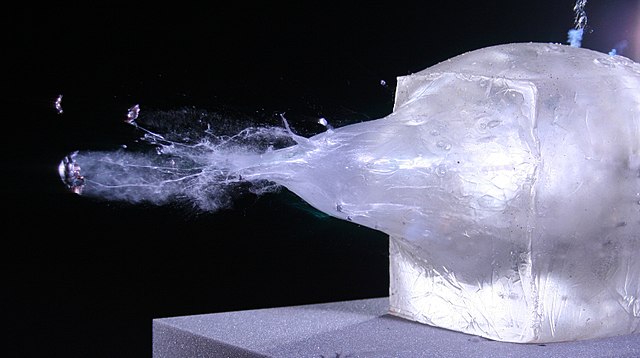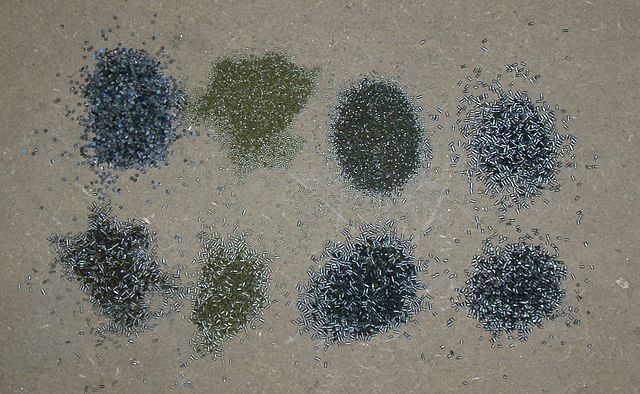Stopping power is the ability of a weapon – typically a ranged weapon such as a firearm – to cause a target to be incapacitated or immobilized. Stopping power contrasts with lethality in that it pertains only to a weapon's ability to make the target cease action, regardless of whether or not death ultimately occurs. Which ammunition cartridges have the greatest stopping power is a much-debated topic.
Overpenetration of a projectile through a synthetic ordnance gelatin.
A cartridge, also known as a round, is a type of pre-assembled firearm ammunition packaging a projectile, a propellant substance and an ignition device (primer) within a metallic, paper, or plastic case that is precisely made to fit within the barrel chamber of a breechloading gun, for convenient transportation and handling during shooting. Although in popular usage the term "bullet" is often used to refer to a complete cartridge, the correct usage only refers to the projectile.
A variety of rifle cartridges: (1).17 HM2 (2).17 HMR (3).22LR (4).22 Win Mag R/F.22 WMR (5).17/23 SMc (6)5mm/35 SMc (7).22 Hornet (8).223 Remington (9).223 WSSM (10).243 Win (11).243 Win Improved (Ackley) (12).25-06 Remington (13).270 Winchester (14).308 Winchester (15).30-06 Springfield (16).45-70 Government (17).50-90 Sharps
Three non-bottlenecked cartridges (9×19mm Parabellum, .40 S&W and .45 ACP) on the left, three bottlenecked cartridges (FN 5.7×28mm, 5.56×45mm NATO and .300 Winchester Magnum) in the center, and two polymer-cased 12-gauge shotshells on the right
Smokeless powders used for handloading
Percussion caps, the precursor of modern primers





